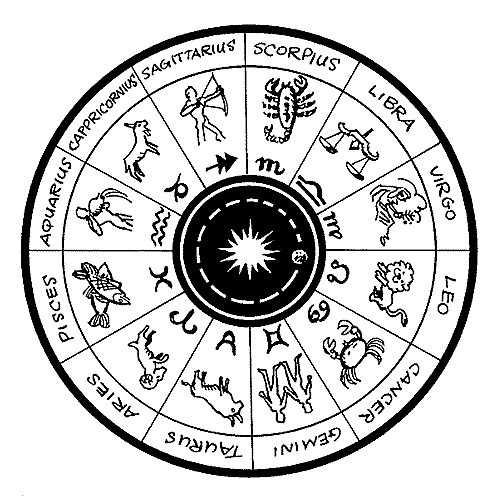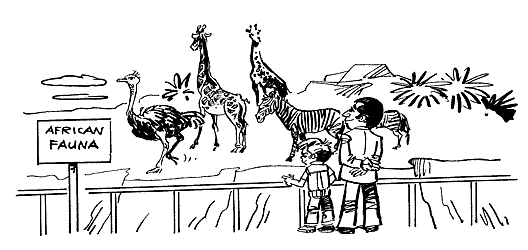Zoo-, Zo- Words: “zoacanthosis” to “zoodynamics”,
Part 2 of 5
Words that include: zoo-, zo-, -zoic, -zoid, -zoite, -zoal,
-zonal, -zooid, -zoon, -zoa, -zoan
(Greek: animal; living being; life).
zoacanthosis:
Dermatitis due to foreign bodies such as bristles, hairs, or stingers from animals.
zoantropy, zoanthropic:
A mental derangement in which a person believes himself/herself to be an animal and acts accordingly.
zodiac:
Literally a “circle of animal figures”; a narrow band in the sky in which the movements of the major planets, Sun, and Moon take place; astrologically divided into twelve (or thirteen?) sections named for the major constellations. The constellations are Aries, Taurus, Gemini, Cancer, Leo, Virgo, Libra, Scorpio, Sagittarius, Capricorn, Aquarius, Pisces, and Ophiuchus [?].

According to Walter Berg’s introduction in his The 13 Signs of the Zodiac, he says: “The Signs of the Zodiac were first mapped by the ancient Babylonians about 3,000 years ago when, indeed, there were 12 Star Signs. Movement on the Cosmic time-scale is very slow compared with the time-scale of a human life. The Star Signs are slipping by a small amount each year, so that there are now 13 Signs in the Zodiac. The Sign of Ophiuchus (30 November-17 December) moved into the Zodiac over 1,000 years ago.”
—Published in 1995 by Thorsons, an Imprint of Harper-Collins Publishers, London.
zoiatria:
The science of veterinary surgery.
zoidal:
A reference to an animal or animals.
zoidiophilous, zoidiophily:
Pollinated by animals.
zoo:
Short for zoological gardens.

Zoological gardens are usually park-like settings for the display of living animals. These zoos are favorite public institutions for entertainment and education in many cities around the world.
The Philadelphia Zoological Garden, chartered in 1859, was the first zoo in the United States. The zoo was delayed by the Civil War, financial difficulties, and restrictions on transporting wild animals. It opened in 1874 on 33 acres, and 282 animals were exhibited.
—As seen in Science and Technology Desk Reference,
by The Carnegie Library of Pittsburgh; page 275.
zooagglutinin:
A substance in animal poisons having the power of agglutinating (clumping) red blood cells.
zooanthellae:
Cryptomonads symbiotic with certain marine protozoa.
zooanthroponosis:
A disease of humans transmissible to animals.
zooapocrisis:
The response of animals to their environmental conditions as a whole.
zooarchaeology:
The study of animal remains from archaeological sites.
zoobenthos, zoobenthic:
1. Those fauna living in or on the sea bed or lake floor.
2. Aquatic bottom-dwelling organisms, including such animals as sponges, lobsters, and polychaete worms.
zoobiotic:
Parasitic on an animal, as some fungi; living on an animal.
zooblast:
An animal cell.
zoochorous, zoochore, zoochory, zoochoric:
1. The dispersal of fruit or seeds by animals; such as, birds, bats, monkeys, and any animal that eats fruits, seeds, etc.
2. Dispersed by the agency of animals.
zoocoenosis:
An animal community.
zooculture, zoocultural:
The cultivation (breeding and care) of animals for food or for biodiversity in the wild, zoological gardens, etc.
zoodermic:
1. Performed with the skin of an animal; said of skin grafting in which the grafts are from the skin of an animal.
2. A reference to the skin of an animal.
zoodetritus:
Biodetritus (particles, fragments) produced by the disintegration and the decomposition of animal organisms (tissues and structures).
zoodomatia:
Plant structures acting as shelters (homes) for animals.
zoodynamics, zoodynmic:
The physiology of animals.